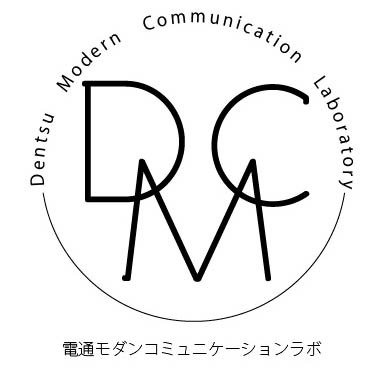This time, let's look at 'The Next Decade of the Advertising Business' (by Ryuji Yokoyama and Hirofumi Sakaeda, published by Shoeisha).
This book centers on how the waves of digitalization and globalization are forcing a major transformation in the business model of advertising agencies.
What is needed for the advertising business to be reborn over the next decade? What is required of advertising professionals?
It raises many uncomfortable truths and challenges for us as well.

The book states, "Eighty percent of advertising professionals will become unnecessary."
Indeed, in the financial industry, where digitalization and globalization advanced earlier, the number of salespeople at securities firms has reportedly halved over the past 15 years.
Given this situation, the book argues that the following types of advertising professionals will become obsolete:
"Executives who can only discuss the weather and stock prices in front of clients"
"Media liaisons who are merely media insiders"
"Salespeople who only took orders because clients were inexperienced"
"CM craftsmen who can only create 15-second and 30-second ads"
"Planners incapable of independent analysis"
It might sound a bit exaggerated, but it's largely accurate.
So why does this happen?
It's because what advertisers truly need is "marketing."
And marketing is not "advertising and sales promotion"—it is the "foundation of business management."
Marketing, being the core of business management, is increasingly permeating areas beyond advertising and sales promotion—such as development, production, logistics, labor management, and more—due to digitalization and globalization.
Therefore, advertising agencies and advertising professionals must redefine their work, right?
This book states, "Those who control the data control the business."
In other words, to gain the upper hand in marketing, a battle for data ownership has begun, and we must win it.
However, advertising agencies currently seem to be in a difficult position.
Within advertising and marketing, the urgent task is to organize audience data—the data on the people we communicate with.
Audience data—meaning user purchase and behavioral history data—is held by Google and many other major websites.
Advertisers also possess audience data: customer data, member data, and website visitor data.
Additionally, point cards, credit cards, and external data providers exist.
However, advertising agencies are not in a position to hold audience data.
This is a fatal flaw.
In other words, audience data becomes the currency of marketing.
Therefore, players without audience data become redundant.
If advertising agencies aim to support advertisers' marketing, they must position themselves to hold and provide data that advertisers lack.
This book identifies three types of audience data advertising agencies should target:
・ Purchase data (online and physical stores) and purchase intent data
・ Social media data
・ Media exposure data, primarily TV viewing
If an advertising agency can provide these to advertisers, its competitive advantage increases.
However, none of these data types will be persuasive unless they are big data, not the thousands-of-panel-member data sets typically held by research firms.
We are now in an era where purchasing, social media, and viewership must be measured at the population level.
Therefore, the key lies in whether advertising agencies can establish data acquisition systems akin to Amazon or T-Point cards.
Achieving this would open up new opportunities.
On the other hand, what does the redefinition of the advertising professional entail?
This book details the skill set required for next-generation advertising professionals, but broadly summarized, it would be as follows:
・ "Insight & Planning" skills to engage with data marketing. Whereas past marketing planners and strategy planners relied on "hypothesis-driven" approaches, future planners need "context-discovery" skills based on analyzing consumer behavior and customer journey data.
・Media/Connection skills for designing touchpoints with the target audience. This differs significantly from the role of traditional media planners at ad agencies, requiring experience in sales promotion and media development. Future touchpoints will also serve as data collection points, necessitating the ability to gather data simultaneously while communicating across various touchpoints and then leverage that data to plan across other touchpoints.
・ Creative skills in "Visual Design/Copywriting/Interaction Design" that are entirely distinct from previous approaches. This requires resetting traditional creative concepts and thinking holistically across all skills, centered on digital. The ability to expand the scope to encompass communication planning (defined in this book as a concept far broader than "advertising"), thinking not from paid media but from owned media to earned media, with paid media serving as a supplement. Additionally, creativity in strategic PR, branded content beyond advertising, and even ideas for service development and new business development are required.
・Technology and Analytics Skills. "Technology" refers to the ability to consult on implementing and operating diverse technologies, from ad delivery and CRM to web optimization and social media. This skill is entirely lacking in current advertising agencies. Internal development is quite difficult, so acquisition from outside is necessary, but technology specialists who truly understand the essence of marketing are also rare. Furthermore, "Analytics" is less a standalone role and more a skill required of all advertising professionals. For example, even creatives need the mindset to analyze response data at each user touchpoint and maximize synergistic effects.
This book identifies such skills as essential for the next generation of advertising professionals, but emphasizes that the most critical reform lies in the "frontline = sales."
We must temporarily set aside the outdated mindset of "sales vs. staff" and carefully reconsider who should serve as the primary point of contact with advertisers.
In other words, the most suitable point of contact varies depending on the nature of the project.
It also suggests that for major clients, forming dedicated business units tailored to their needs is one effective strategy.
This means staffing for problem-solving not as an advertising agency organization, but as the advertiser's own organization.
Each of these business units could potentially become a prototype for the next generation of advertising agencies.
While this book offers many critical perspectives, reading it through to the end reveals these insights as passionate encouragement from the two authors, who have long been immersed in this industry.
Facing digitalization and globalization, advertising agencies and us advertising professionals.
While it laid bare more than enough challenges, conversely, it also clearly outlined opportunities for future growth.
(Photo: Takaaki Koshiba)






